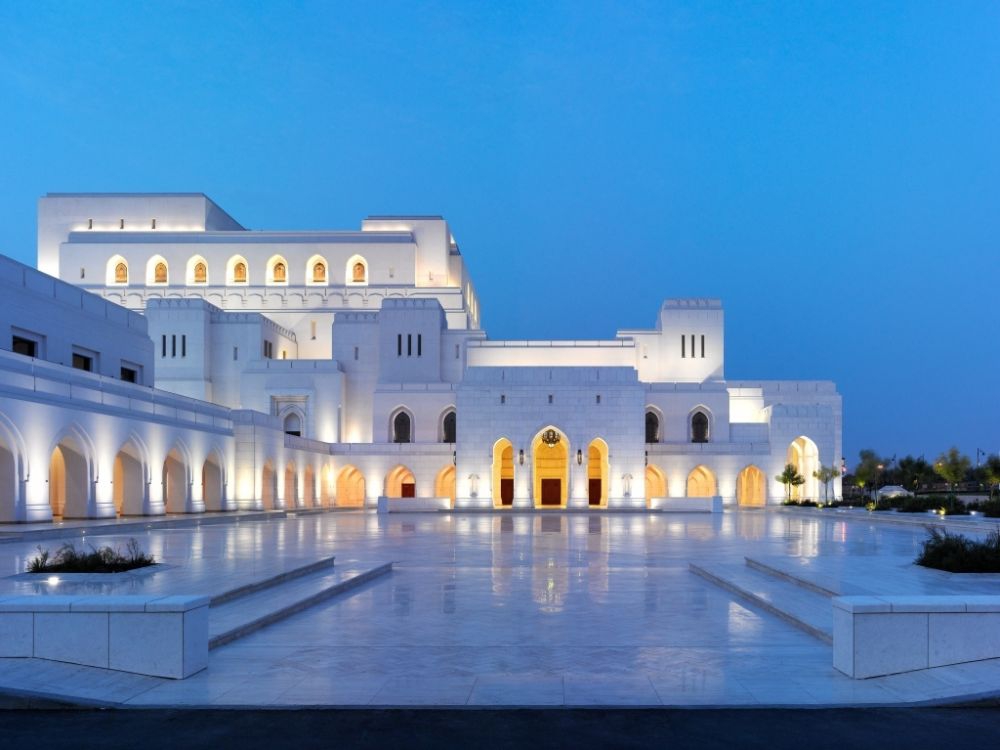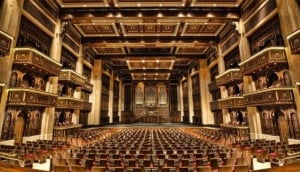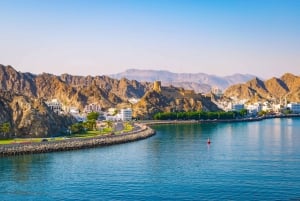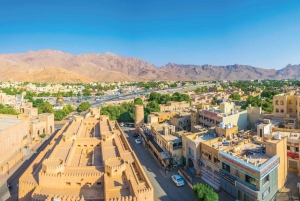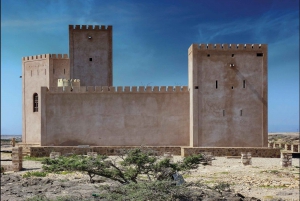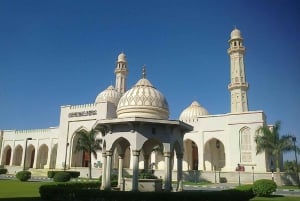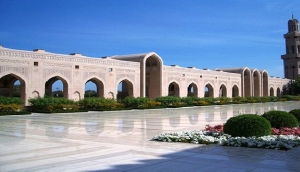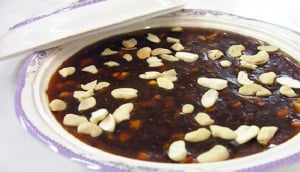Spectacular Opera in Oman
...a gleaming white structure set in lush gardens, an alabaster palace...
Book Top Experiences and Tours in Oman:
If youʻre booking your trip to Oman last minute, we have you covered. Below are some of the top tours and experiences!- Hajar Mountains: Private Day Trip from Muscat
- Muscat: Big Bus Hop-On Hop-Off Sightseeing Tour
- From Muscat: Wadi Shab & Bimmah Sinkhole Full-Day Tour
- Sunset Desert Empty Quarter Desert - Full Day With Lunch
- Muscat Half-Day City Tour with Audio Guiding
In October 2011, the grand doors finally swung open to receive the inaugural visitors at the Royal Opera House Muscat (ROHM). The people of Muscat had been watching the development of this monolithic building, from being a twinkle in the eye of the consultants through to its long-anticipated completion. Who knew what an incredible success it would become?
Now into its second year of operation, the ROHM continues to attract world-class performers to the delight of tourists and residents.
But it’s not just the music and spectacle that attracts the people; it is the opera house itself. Indeed, it is an opera house fit for a Sultan.

Great things were expected from the developers and it seems that no expense was spared in ensuring that great things were delivered.
The building’s exterior is simply stunning to look at; a gleaming white structure set in lush gardens, an alabaster palace visible from the far corners of the city.
The theme running throughout the design is one of contrast and harmony; the architecture is an interaction between tradition and modernity, defining a new, modern Omani style, now favoured by the Royal Estates of Oman.
International consultants worked with local craftspeople to create the intricate wooden carvings seen on doors, walls and ceilings. But things are not as they initially appear; this new Omani style is flexible, adaptable and has a hidden agenda.

Decorative mashribiya panels screen away soundproofing materials, where traditionally they would have screened away people. Things have two meanings - painted panels in the beams reveal hidden puzzles to those who are in the know and are willing to look hard enough. The ornate medallions adorning the ceiling are amazing to look at, yet are actually part of the air-conditioning system. Acoustic reflector panels are cleverly concealed with trompe-l’oeil artwork.
The main hall gleams and sparkles, taking its light from the huge windows of etched and coloured glass. Zouaq work, hand painted stencil decoration on a wooden surface, has been practiced for centuries throughout the Arab world and further embellishes the interior.
The essence of Islamic and Mughal architecture, historically seen in Omani forts, is echoed throughout the building.
The feature of greatest beauty is, however, hidden from public eyes. The Royal Lobby contains a ceiling dome with a magnificent example of chemisana plasterwork. This technique is taken from the Arabic word for sun, chems, as it allows light to shine through carved openings in the plaster. The geometric patterns in the coloured glass are incredible and reminiscent of the glorious dome in the Sultan Qaboos Grand Mosque.

Not only is the architecture of this iconic building creating such a stir throughout the country, and the inspirational program of performances drawing crowds in their hundreds through the opera house doors; a foundation has been laid to educate local people in global artistic culture and will support them in developing their own artistic skills.
This makes the creation of an opera house in Oman so significant. Local talent can now be influenced and nurtured and brought up to international standards for the world to enjoy!
And it doesn’t end just there - the newly completed Opera Galleria has been constructed in identical fashion, perfect for a spot of world-class pre-performance shopping!
